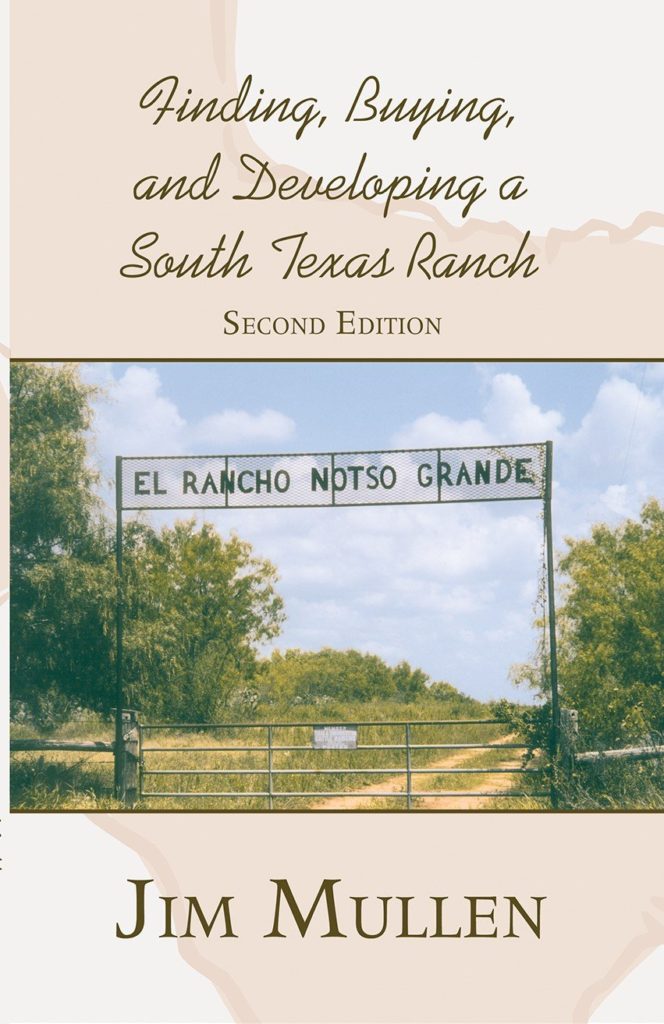You cannot help but to notice that the economy is in the news. On every talk show, in every paper, and leading off most newscasts is a gloomy report on the economy. If you have not been affected, that’s great; hopefully it won’t be too bad in Texas. If it does strike home, and you have to tighten up a bit, does that mean you have to let your wildlife management slide? What can you do when your wife starts giving you the evil eye over the feed bills at the lease or ranch? Following are some tips to scale back management and perhaps refine what you do to reduce costs and make your dollar go further.
1. Reduce the population, reduce the feed.
While is may seem simplistic, whether we’re talking deer, quail, or largemouth bass, reducing the population is always a good idea if supplemental feed is part of your program. Carrying Capacity is a term that many have forgotten in this day of the bulk feeder. It is the principle that you should manage so that your wildlife can maximize its’ genetic potential on native foodstuffs alone. Having a good idea of what your carrying capacity is will allow you to apply supplemental feed judiciously; providing it when it can do the most good, not as a means of survival for a significant portion of the population.
If you’re currently managing for a deer to 10 acres, and have significant traffic at supplemental feeders, you are stocked above your range’s carrying capacity. Decrease your density to a deer to 15 acres and put the surplus in the freezer or bring in some young hunters. Doing so will not only reduce your feed bill but will also reduce the pressure on native range plants. I feel safe in saying that most deer programs would benefit from a reduction in total numbers. What to take is always a concern; don’t just increase the doe harvest, look hard at some of those middle-age deer as well. Keep your objective sex ratio in mind, and shoot more of all classes. Also, if you’re high-fenced and you are forced to sell the ranch, please consider removing sections of the fence. If the economy is slow to recover, high-fenced ranches will glut the market and management may be the least of your worries.

Lastly, if you continue to provide supplemental feed, work to make it efficient. Far too much feed goes to non-target species, giving rise to “Boone and Crockett” raccoons. Grease the pipes on your feeders, add metal skirting to platform feeders, and seriously consider fencing out feral hogs so more feed goes to the species you are managing.
With quail, I know a lot of people think lightly harvesting quail will increase next year’s population. These attempts to “save” quail may actually be counter-productive as a large population can over-utilize the range and increase mortality. In situations other than baiting, quail hunting is self-limiting; you don’t find many, so the bag goes down and you don’t hunt as much. If you do bait quail, then be careful as shot-out coveys will regroup and the big covey you flush in January is not a “new” covey, but the remnants of several coveys banded together.
2. Improve Utilization.
Once you have the numbers down, work on increasing the utility of what land you have. Be it 60 acres or 6,000 acres, you can always improve utilization by improving diversity, both in open vs. brushy as well as in woody plants vs. “weedy” plants. Look first at your soils map. If you’ve not done so, go to: http://soils.usda.gov/, scroll down the left side for “web soil survey”, and find your property. This site gives you a wealth of information about the soils on your place, the dirt that makes things run.

Once you get your property outlined, go to Soil Data Explorer to see where different crops can be grown. This gives you an idea of where food plots should go or where you can concentrate your food plot efforts if you’re cutting back. Some soil is simply holding the earth together and should be left alone. Brush is the best it can produce and often times, particularly in the case of gravel ridges or rocky outcrops, disturbing the soil will only make things worse. Learning your soils may be a surprise. You may have fields in soils that are not really suitable or may be marginal for what you want. These marginally-productive open areas are prime for the cheapest management tool of all, natural regrowth. I have a quail client that buys old farms for two reasons, one, he knows the soil has native sunflower seed in it and two, he knows he can control regrowth brush more cheaply than he can remove dense brush; allowing it to come back only where he wants it. To lay out a field for regrowth to native brush; flag hedgerows in a north-south or east-west direction using “T” posts. For deer, leave 40-50% for regrowth; quail, leave only 30%. Anything outside these marked hedgerows or brush lines can be treated individually with herbicide or manually grubbed out over time. This is much cheaper than letting things go to the point that a bulldozer is needed.
Old fields in South Texas usually revert initially to either mesquite or twisted acacia if left idle. Half-cutting is a technique favored by quail managers that benefits all wildlife by improving cover. The procedure requires only a pair of gloves and a hand saw and is a very economical way to increase utilization of open areas by not only quail, but deer, hogs, and turkey as well. To half-cut a young tree, pick a plant that is at least 9 feet tall. Grasping a limb at about 3 feet above the ground; cut 1/2 of the way through the limb from the inside of the tree towards the outside. Continue to cut slowly, while applying pressure towards the outside until the limb can be pushed down, but is still attached to the tree. This limb will remain alive, and by repeating the process around the young tree, you make an “umbrella” of limbs which provide close cover near the ground where wildlife can use it. Try to threat trees in groups of three or more to create “mottes” and space the mottes 50-80 yards apart. This technique is cheap; good exercise, and makes an idle field much more productive by increasing the usable acreage for wildlife.

If you do not have any larger regrowth, just drive three “T” posts in a triangle, five feet on a side, connect the tops with wire, and stack cut limbs against this “teepee”, cut ends up. Build these in groups of three or more, spaced like the half-cuts, and you will see increased use of the open field by all types of wildlife.

You might find some fertile soils still in heavy bush. Since we’re talking about management on a budget, now may not be the time to call in the root-plow. How can you make use of these better soils without spending a lot of cash? Again, herbicides, selectively applied and matched to the brush species targeted, are an economical way to reduce woody cover. Spray brush in a linear pattern on a four-wheeler, wait until the grass underneath explodes with the death of the water-stealing brush, and follow up with a controlled burn. Voila, a new senderro in good soil, ready for the disk. This works particularly well along old roads or senderros where the brush is encroaching. When the brush includes mature mesquite trees, I either leave them be or remove them with a chain saw. Mature mesquite gets its moisture from deep in the earth through a tap root and does not compete for surface moisture with the oats you plant or the native weeds that erupt following a brush kill.

3. Improve Water Distribution/Accessibility.
Water is what drives South Texas wildlife. We all know when it rains, everything benefits; plants, animals, people. Unfortunately, rainfall is not dependable in South Texas, and water can at times become limiting. Increasing the availability of water across your ranch or lease will make more of your land usable for wildlife and can be done fairly economically.
Rather than drill a new water well, use poly pipe to increase the area served by an existing well. Poly pipe is much improved over the old black plastic pipe and is now available thick enough to drive over and resistant to UV rays, so it does not have to be buried. At $1.50 per foot for 2-inch poly, you can run water a mile for $8,000 vice $20,000 for a new 300 foot well at $45/ft. and have faucets along the way to further improve availability.
Where you have existing troughs, you’ll note they are always out in an open area, surrounded by trampled ground. To improve access for wildlife to this water economically, just run PVC out to the nearest good cover, stake the end, and add a length of garden hose. To activate the line, either use a siphon or add a “T” in the supply line. You will have to incorporate a valve either way, so the flow is just a drip. Since the end is garden hose, the hogs can play with it and do little damage.

If you do not have a well or a dependable stocktank in an area, and want to improve wildlife use of that area, consider a “guzzler”. A wildlife guzzler is a structure that collects rain water and dew, stores it in a cistern, and delivers the water to wildlife in a trough. A 12-foot by 12-foot tin roof can divert 89 gallons of water with a one-inch rain! Put that water in a black plastic cistern and trickle it out to a low wildlife trough and it will last for a long time.
If you have feral hogs, you probably will want to fence the trough, and for best use by deer, I recommend at least an 80-foot by 80-foot exclosure with some brush inside the fence. But it doesn’t have to be fenced and you can use recycled materials including old roofing tin, old fence posts for the uprights, and discarded sucker rod to hold the tin. It doesn’t have to be pretty and this is a good application for bailing wire. Just work to get the rain water in the tank, that’s all that matters.
4. Scratch the Surface.
Perhaps the best investment return of your wildlife management dollar is soil disturbance. A lot of my clients have opted for the Agricultural tax valuation for wildlife management, called by many the “Ag Exemption for Wildlife”, which eliminates the grazing requirement. This results over time in thick stands of native grass which is unproductive for most wildlife, certainly for deer and quail, except as cover. Additionally, more and more wildlife managers are battling large fields of coastal Bermuda grass as ranches shift from intensive cattle operations to primarily wildlife operations. These grass patches reduce wildlife use by inhibiting mobility, shading out food-producing forbs, and hiding what forbs do grow.
The easiest solution, and one worth considering if you’re concerned about costs, is to use livestock. Cattle, and sheep or goats if your place is properly fenced, can be a great tool for wildlife management. Grazing got a bad rap in the early years of wildlife management because virtually all ranches were cattle ranches first, with wildlife a distant second and over-grazing got the blame for most management problems. Now the pendulum has swung the other way and after several years of no cattle, sheep, or goats, many landowners find themselves awash in a sea of grass. Fire is the current darling of researchers, but prescribed burns now require a certified burn master and significant insurance. Further, done properly, burning requires firebreaks that should be installed by earth-moving equipment, so burning these days is more than just striking a match. Grazing does not require anything special other than fencing and water troughs, and can produce income to the landowner. Consider working with a neighbor or a local cattleman to get the grass down to manageable levels.

Now it’s time to turn the soil. Soil disturbance gives the best return on any management dollar. It does not require a $200,000 tractor or an 18 foot disk to be effective. Simply scratching the surface will break up the crust, flip old vegetation, and stimulate weed seeds if done at the proper time. If you have access to a tractor, that’s fine. If not, discing for weeds is done in the late winter, early spring, before commercial planting, so you should be able to hire a local farmer to disk your fields and senderros at a reasonable cost. To stimulate native sunflower seed, which is usually already in the soils of old fields; disk in December-January. For Texas croton, or dove weed, do the same, while for jumbo or three-seeded croton, I usually wait until mid-March. If you have access to the equipment and have the time, try discing several times over the cooler months and see what comes up. Discing in cool weather inhibits grass and favors weeds, the food for wildlife. And you don’t need to disk deeply or neatly, just a slight scratching of the top three to four inches of soil will get you results when it rains.

5. Walk, Don’t ride.
Lastly, with the advent of the four-wheeler, many hunters no longer walk anywhere. In times of economic slowdowns, perhaps you should walk to the stand, walk to the back pasture, or walk just to enjoy the quiet. If you have passed on your helicopter survey this year, walking the ranch will help you get an idea of your wildlife populations. There is even a formal sampling technique based on walking a set route several times at sunrise/sunset, called the Hahn Cruise technique. Look it up and see if you might benefit from a walking census which costs nothing, and brings you closer to your wildlife.







One thought on “Managing Wildlife in South Texas on a Budget”